Flora 8 BIGELOW
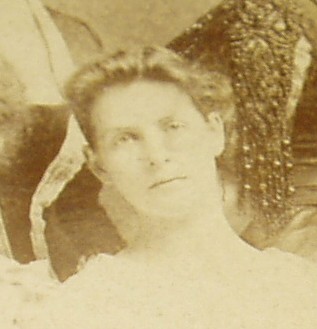
(../rod2005/flora75c.jpg) Flora Bigelow

16312.748 Flora 8 Bigelow,
daughter of John 7,
(Asa 6, David 5, David 4, John 3, Joshua 2, John 1) and Jane
(Poultney)
Bigelow, was born on 18 October 1868 Highland Falls, NY
(Squirrels) She married first 15 December 1886 Charles Stuart
Dodge. He was the son of Gen. Charles C. and Mary Schieffelin)
Dodge. Her second marriage was on 06 June1905 to Lionel George
William Guest. He was born 16 August 1880, in London, Middlesex,
England, the son of Sir Ivor Bertie and Cornelia Henrieta Maria
(Spencer_Churchill) Guest. They resided in London, Montreal, and
New York City. Lionel died 27 September 1935 at age 54, in Great
Canford, Dorset, England. Flora died in 1964 at age 95.
Children of Charles and Flora (Bigelow) Dodge: (see below)
16312.7481 John Bigelow Dodge, b 15 May 1894 NY City; d __ 1960 at age 65; John left the States abt. 1915 and became a British citizen, so he could join the R.A.F. He fought WWI & WWII. Was one of the Great Escapers at Stalag Luft III, but was also related to Winston Churchill. (see below)
16312.7482 Flora Dodge, b 25 June 1889; d
_____ ; (no record, probably error).
16312.7482 Lucie Bigelow Dodge, b 28 June 1889; d 27 Nov 1968 Manhatten, NY; m 06 Aug 1914 Walter Tower Rosen (see below)
Sources:
The Bigelow Society, The Bigelow Family Genealogy,Vol II
pg. 492-493.
Howe, Bigelow Family of America;
Bigelow Society records from family.
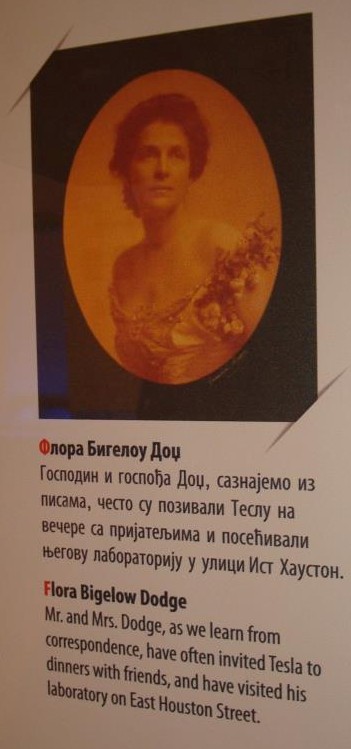
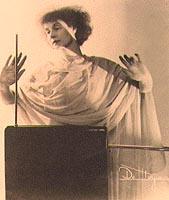

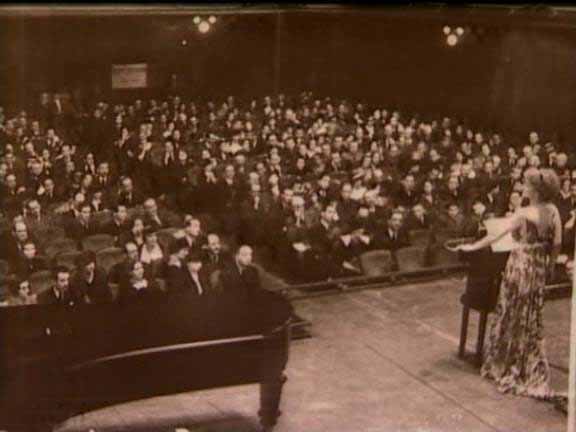
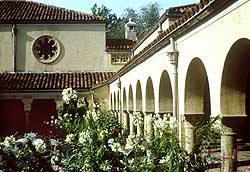
Caramoor is the legacy of Walter
and Lucie Rosen, who established the estate and
built a great house as its centerpiece, filling it with
treasures collected on their travels. Walter Rosen was
the master planner, bringing to reality his dream of
creating a place to entertain friends from around the
world. Their legendary musical evenings were the seeds
of today’s International Music Festival that is held
annually on the estate.
Walter Rosen’s friend Charles Hoyt
first introduced the Rosens to the estate. Hoyt’s
mother had an estate in Katonah, a village in the town
of Bedford, New York that she was looking to
sell. It was named after her – “Caramoor” for
Caroline Moore Hoyt. Charles Hoyt, a collector like
Walter Rosen, certainly knew of his love for things
Italian. The Hoyt estate, which was more than 100
acres, had a beautifully laid-out Italianate garden,
with rows of tall cedars mimicking the ubiquitous
cypresses of Italy. The Rosens fell in love with this
garden, still found at Caramoor today, and bought the
property.
 The
Caramoor property was purchased in 1928 by the Rosens
as a summer home and country retreat. Both were
passionate collectors and accomplished musicians. From
1929 to 1939, Mr. Rosen designed and built the
rambling stucco villa now known as the House Museum.
The
Caramoor property was purchased in 1928 by the Rosens
as a summer home and country retreat. Both were
passionate collectors and accomplished musicians. From
1929 to 1939, Mr. Rosen designed and built the
rambling stucco villa now known as the House Museum.
The Rosens furnished their mansion
with their vast collection of European and Asian art
and furnishings. Noteworthy are the 15th-century
Spanish Alcove in the Music Room imported from Toledo;
an eight-paneled 18th century green jade screen from
China – one of only two in the world; a relief from
the studio of Donatello; tapestry from 14th-century
Florence; terra cotta reliefs from the studio of Della
Robbia, Ming vases and a gilded bed once owned by Pope
Urban VIII.
The Rosens had two children, Walter
and Anne. During the Second World War in 1944,
while flying for the RAF, Walter was killed returning
from a raid in Germany. His absence from the
house was keenly felt, and it prompted his parents to
act on their previously discussed plans to preserve
the artistic and musical heritage of Caramoor.
 In 1945, the Rosens
bequeathed the Caramoor estate as a center for music
and art in memory of their son. The next year the
Music Room was opened to the public for three summer
concerts. The International Music Festival grew from
those intimate concerts the Rosens shared with their
friends at their home. After Walter Rosen died in
1951, Lucie Rosen continued to expand the
Festival. During the 1950s, outdoor concerts
were presented in the Spanish Courtyard. Caramoor’s
fame continued to grow and seats became impossible to
obtain. Prompted by The New York Times critic Howard
Taubman, Lucie Rosen decided to make Caramoor more
available to the public, and she had a larger space –
the Venetian Theater – constructed. The theater
opened in 1958.
In 1945, the Rosens
bequeathed the Caramoor estate as a center for music
and art in memory of their son. The next year the
Music Room was opened to the public for three summer
concerts. The International Music Festival grew from
those intimate concerts the Rosens shared with their
friends at their home. After Walter Rosen died in
1951, Lucie Rosen continued to expand the
Festival. During the 1950s, outdoor concerts
were presented in the Spanish Courtyard. Caramoor’s
fame continued to grow and seats became impossible to
obtain. Prompted by The New York Times critic Howard
Taubman, Lucie Rosen decided to make Caramoor more
available to the public, and she had a larger space –
the Venetian Theater – constructed. The theater
opened in 1958.
The Caramoor museum was created in
1970, two years after Lucie Rosen’s death. The Rosens’
daughter, Anne Stern, and many professionals continued
the task of cataloguing, conserving and interpreting
the collection for several years afterward. In 1971
the house was opened to the public. In 1974 a
new wing was added to include rooms and objects d’art
from the Rosens’ New York City residence.
 What is known today as the
Caramoor Center for Music and the Arts was originally
created by a foundation established by the Rosens to
operate the estate in perpetuity. Lucie Rosen
once said that people feel they have gone to another
country and another time when they visit Caramoor.
Because the Rosens were touched by this, by the
obvious pleasure their friends took in Caramoor’s
beauty, they decided to leave their home as a legacy
for all to enjoy after they had gone. It is to the
vision and energy of this inspirational couple that
thousands owe their enjoyment of Caramoor each year.
What is known today as the
Caramoor Center for Music and the Arts was originally
created by a foundation established by the Rosens to
operate the estate in perpetuity. Lucie Rosen
once said that people feel they have gone to another
country and another time when they visit Caramoor.
Because the Rosens were touched by this, by the
obvious pleasure their friends took in Caramoor’s
beauty, they decided to leave their home as a legacy
for all to enjoy after they had gone. It is to the
vision and energy of this inspirational couple that
thousands owe their enjoyment of Caramoor each year.
Flora Bigelow Dodge and her
family, in the UK
by
Ed Miller, Secretary of Ferring History Group
In
In
1912 Flora, her son John Bigelow Dodge (Johnny), and her new
husband, the Hon. Lionel Guest, came to London. Lionel’s
courtesy title ‘Honourable’ was due to his being the son of a
Baron, and Flora
acaquired this honorific when she married him. She also
acquired many aristocratic in-laws (Lionel was the grandson of
the Duke of Marlborough) and social and political contacts
(Lionel’s brothers were
susuccessful politicians and his cousin was Winston
Churchill). They lived in a very fashionable part of London
and Flora (rather more than her husband) figured in the social
columns of the Times even before
thtthe First World War.
WWhen that war broke out on 4 August 1914, Lionel, Flora and
Johnny were in Canada, for the wedding of his sister Lucie.
The three of them returned to London immediately. Flora wrote
to Churchill to ask if he could get Johnny a commission.
Although a US citizen at that time, Johnny was immediately
made a Sub-Lieutenant in the Royal Naval Division, a naval
land force created by Churchill. He served in the same
battalion as Rupert Brooke and Arthur Asquith, the Prime
Minister’s son. Lionel joined the Royal Navy Volunteer
Reserve, then transferred to the Royal Flying Corps, and ended
the war as a Major at the Air Ministry. Flora busied herself
attending many social and charitable functions (her
attendances and movements being reported in the Times) but
when Johnny was wounded at Gallipoli, she went out to Egypt,
where he had been evacuated, to bring him home and supervise
his convalescence. Later, Johnny transferred to the Army and
ended the war as a Lt. Colonel in France.
After the war, Johnny went on mysterious travels to the Middle
East and Russia (where he was arrested as a spy). These
travels are described in some detail in Tim Carroll’s book,
‘The Dodger’. Flora had an ever more busy social life,
constantly appearing in the ‘Court Circular’ column of the
London Times. Lionel returned to his business interests, and
Johnny to his work as a stockbroker.

